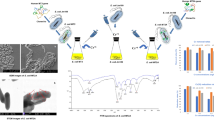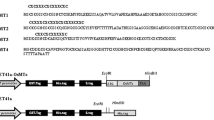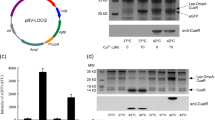Abstract.
Genetically engineered E. coli, which express both a Hg2+ transport system and metallothionein, were tested for their ability to remove mercury from wastewater. The wastewater contained more than ten different ions, including 2.58 mg/l mercury, and its pH was 9.6. Mercury uptake was faster from the wastewater than from distilled water, probably because of the higher ionic strength, as the high pH had little effect on mercury accumulation. EDTA also stimulated mercury uptake rather than inhibiting it. A hollow-fiber bioreactor was used to retain induced cells for continuous mercury uptake. The cells removed more than 99% of the mercury in the wastewater and the final amount of mercury accumulated was 26.8 mg/g cell dry weight, while none of the other ions were removed from the water. These results indicated that the induced cells had a high affinity and specificity for mercury.
Similar content being viewed by others
Author information
Authors and Affiliations
Additional information
Received revision: 5 December 2000
Electronic Publication
Rights and permissions
About this article
Cite this article
Deng, .X., Wilson, .D. Bioaccumulation of mercury from wastewater by genetically engineered Escherichia coli . Appl Microbiol Biotechnol 56, 276–279 (2001). https://doi.org/10.1007/s002530100620
Received:
Accepted:
Issue Date:
DOI: https://doi.org/10.1007/s002530100620




